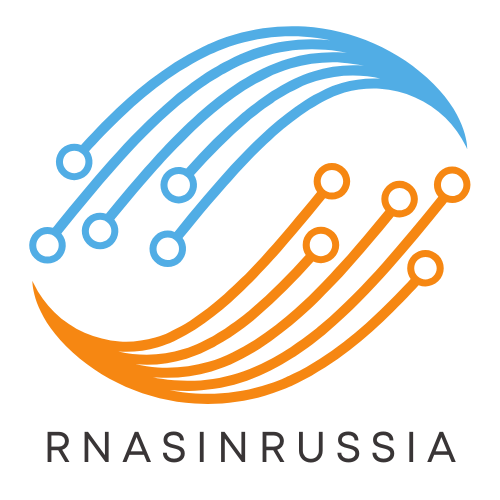Table of Contents
ToggleThe Internet of Things (IoT) is transforming the way people interact with technology, creating a seamless network of interconnected devices that enhance daily life. From smart home gadgets to wearable health monitors, IoT devices are designed to collect and share data, making tasks more efficient and convenient.
As homes and cities become smarter, understanding the impact of these devices is crucial. They not only improve personal comfort and security but also drive innovation across various industries. With advancements in connectivity and artificial intelligence, the potential for IoT devices continues to expand, promising a future where everyday objects are more intelligent than ever.
Overview of Internet of Things Devices
Internet of Things (IoT) devices encompass a wide range of interconnected technologies designed to collect and exchange data. These devices include smart home appliances, wearable devices, industrial sensors, and connected vehicles. Each category plays a vital role in daily activities and operational efficiencies.
Categories of IoT Devices
- Smart Home Devices
- Smart thermostats, like the Nest Learning Thermostat, optimize energy consumption.
- Smart speakers, such as Amazon Echo, act as voice-activated assistants.
- Smart security systems include cameras and alarms that enhance home safety.
- Wearable Devices
- Fitness trackers, like Fitbit, monitor health metrics such as steps and heart rate.
- Smartwatches, such as Apple Watch, provide notifications and health tracking.
- Health monitoring devices, like glucose monitors, aid chronic condition management.
- Industrial IoT Devices
- Sensors monitor machinery performance and predict maintenance needs.
- Smart meters facilitate real-time energy consumption and billing.
- Supply chain management solutions track inventory levels and optimize logistics.
- Connected Vehicles
- GPS systems provide real-time navigation and traffic updates.
- Telematics devices monitor vehicle performance and driver behavior.
- Advanced driver-assistance systems enhance safety and navigation.
Key Technologies Enabling IoT
- Connectivity Protocols: Wi-Fi, Bluetooth, Zigbee, and cellular networks enable seamless communication between devices.
- Cloud Computing: Provides storage and processing power, allowing real-time data analysis and accessibility.
- Artificial Intelligence: Enhances device functionality through data-driven insights, enabling automation and improved decision-making.
Impact of IoT on Daily Life
IoT devices significantly improve daily life by increasing convenience and efficiency. Smart home devices streamline household management. Wearables empower users with health insights. Industrial IoT devices enhance productivity and operational oversight. Connected vehicles promote safer driving experiences.
With ongoing advancements in connectivity and processing capabilities, the range and functionality of IoT devices continue to evolve, shaping a smarter and more integrated future.
Types of Internet of Things Devices

Various types of Internet of Things (IoT) devices are transforming how individuals and industries operate. The primary categories include consumer devices and industrial devices, each serving unique functions and applications.
Consumer Devices
Consumer IoT devices enhance everyday life by promoting convenience, comfort, and efficiency. Common examples include:
- Smart Home Appliances: Devices like smart thermostats, smart speakers, and smart locks allow users to control their home environments through mobile apps or voice commands. Automation capabilities improve energy management and security.
- Wearable Devices: Fitness trackers, smartwatches, and health monitors provide users with real-time health data, encouraging healthier lifestyles. These devices track metrics like heart rate, sleep quality, and physical activity levels.
- Connected Appliances: Refrigerators, ovens, and washers equipped with connectivity features offer remote monitoring and control. Users can receive alerts and manage their devices from anywhere.
Industrial Devices
Industrial IoT devices play a vital role in enhancing operational efficiency and productivity across various sectors. Key examples include:
- Sensors: Temperature, humidity, and pressure sensors collect data that helps in monitoring and optimizing manufacturing processes. These sensors enable real-time decision-making and predictive maintenance.
- Smart Meters: Smart energy meters provide businesses with insights on energy consumption and grid management. These meters facilitate smarter energy use and cost savings.
- Telematics Systems: Used in connected vehicles, telematics systems monitor vehicle performance, location, and driver behavior. They support fleet management and enhance logistics efficiency.
In sum, IoT devices, whether for consumer or industrial use, play integral roles in fostering smarter environments, driving efficiency, and improving user experiences across various applications.
Benefits of Internet of Things Devices
Internet of Things (IoT) devices provide numerous advantages that significantly enhance daily operations and quality of life. From boosting efficiency to improving connectivity, these devices integrate seamlessly into personal and industrial environments.
Increased Efficiency
Increased efficiency is one of the primary benefits of IoT devices. Smart home appliances automate household tasks, reducing the time required for chores. For example, smart thermostats adjust temperatures automatically, saving energy and lowering utility costs. Wearable health monitors track physical activity, helping individuals optimize their fitness routines. In industrial settings, IoT sensors monitor equipment performance in real time, preventing downtime and facilitating maintenance. Operations that once took hours can now occur in minutes due to automated workflows enabled by IoT technology.
Enhanced Connectivity
Enhanced connectivity emerges as a crucial advantage with IoT devices. These devices communicate wirelessly, allowing for real-time data exchange across various platforms. For instance, connected vehicles share critical information with navigation systems, improving traffic management and route optimization. Smart home systems enable users to control appliances remotely via smartphone applications, providing unparalleled convenience. The integration of IoT technologies across sectors fosters collaboration, as devices connect seamlessly, enriching the data ecosystem and enabling better decision-making processes.
Challenges of Internet of Things Devices
Challenges affect the widespread adoption and functionality of Internet of Things (IoT) devices, notably in security and interoperability.
Security Concerns
Security concerns pose significant threats to IoT devices, as their interconnected nature creates multiple entry points for cyberattacks. Vulnerabilities in devices can lead to unauthorized access, data breaches, and privacy violations. A study by the Ponemon Institute found that 50% of organizations experienced IoT-related security incidents in the past year. Users often neglect device security, default passwords remain unchanged, and firmware updates are not regularly applied. Effective security measures, including encryption, regular updates, and user education, are vital for minimizing these risks.
Interoperability Issues
Interoperability issues arise as IoT devices often use different communication protocols and standards, making seamless integration challenging. Diverging technologies impede the user experience, as compatible devices may not communicate effectively. According to a report from Gartner, 30% of IoT projects fail due to integration difficulties. Lack of universal standards complicates the development landscape, limiting consumer choice and innovation. Collaborative efforts among manufacturers and developers are essential to establish common protocols and enhance overall system compatibility.
Future Trends in Internet of Things Devices
Future trends in Internet of Things (IoT) devices point towards significant advancements in connectivity, automation, and data intelligence. The evolution of 5G technology enhances connectivity, offering faster speeds and lower latency, which supports the increased density of connected devices within smarter environments.
Enhanced artificial intelligence (AI) capabilities drive automation across IoT systems. Devices will interact more intuitively, leading to improved user experiences. For example, smart home systems will predict user behavior, adjusting features like lighting and temperature automatically.
Increased focus on edge computing influences IoT device architecture. By processing data closer to the source, edge computing reduces response times and alleviates bandwidth constraints. Devices such as industrial sensors process critical data locally, enabling timely decisions on performance.
Sustainability goals shape the design and functionality of upcoming IoT devices. Energy-efficient appliances are becoming essential in consumer markets. Many manufacturers prioritize eco-friendly materials and energy-saving features, reflecting a growing demand for sustainable practices.
Moreover, security enhancements are critical as the IoT ecosystem expands. Emerging security protocols will focus on device authentication and data encryption, protecting against cyber threats. Solutions like device segmentation and zero-trust frameworks will gain traction.
Trends also indicate the rise of interoperability solutions fostering seamless integration among diverse IoT platforms. Standardization efforts will streamline communication across devices, enhancing user convenience. Collaboration among tech companies will be vital in creating robust interoperability frameworks, leading to a more connected experience.
Finally, the integration of IoT devices with emerging technologies like augmented reality (AR) and virtual reality (VR) offers exciting possibilities. For instance, smart glasses could guide users through tasks, combining IoT data with immersive visuals for enhanced functionality.
The future of IoT devices holds promise for transforming lifestyles across various sectors, improving efficiency, safety, and environmental sustainability. Each trend contributes to the enhanced functionality and capabilities of IoT devices, ultimately reshaping daily experiences.
The Internet of Things is reshaping how individuals and industries operate. As devices become more interconnected the potential for increased efficiency and enhanced quality of life grows. Innovations in technology will continue to drive the evolution of IoT devices making them smarter and more capable of addressing everyday challenges.
While security and interoperability remain pressing concerns addressing these issues is crucial for widespread adoption. The future promises exciting advancements that will not only improve user experiences but also foster a more sustainable and efficient world. Embracing the IoT revolution will pave the way for smarter homes and industries ultimately transforming daily life in profound ways.





